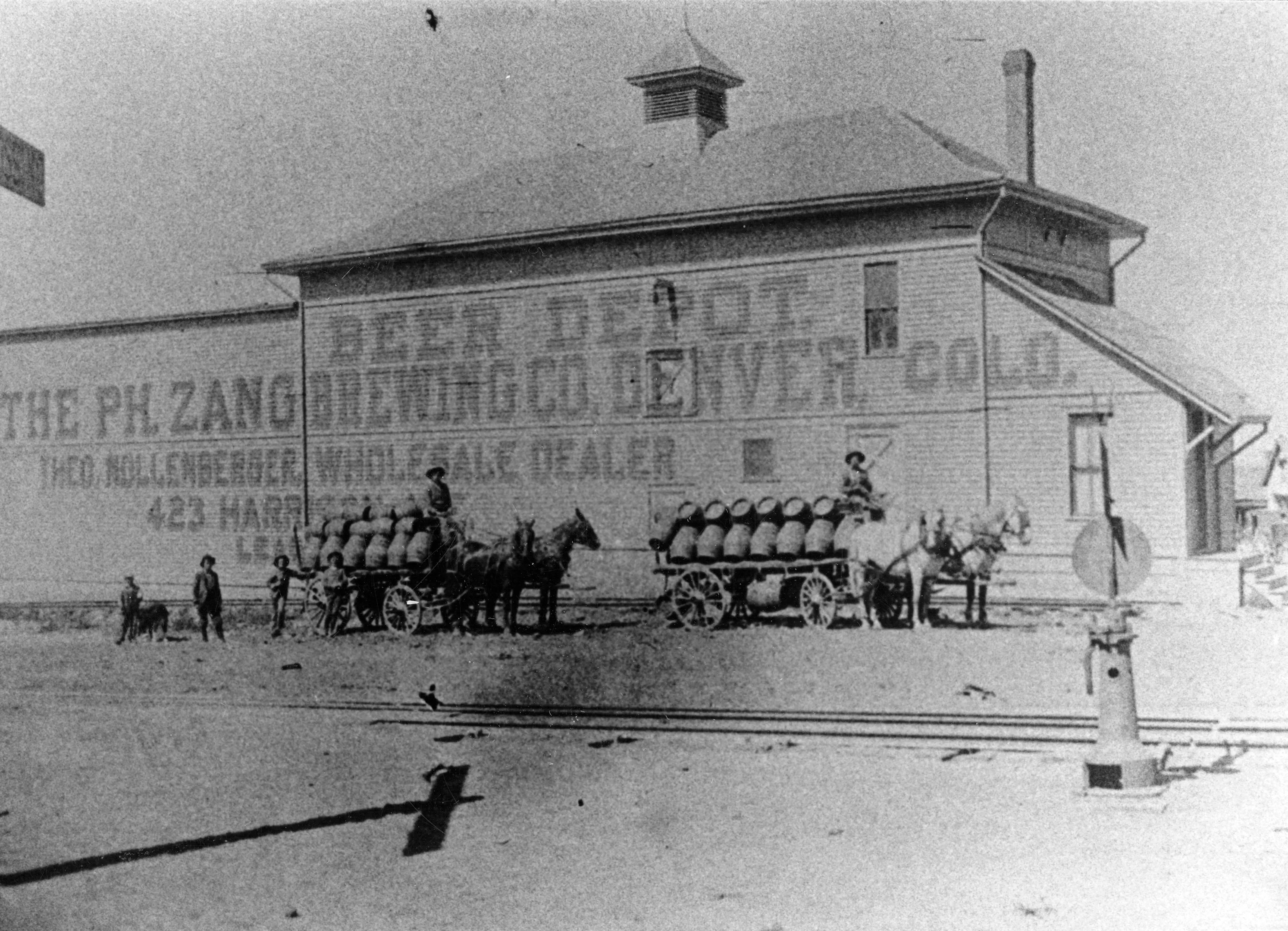
History Colorado file #10026567

Audio By Carbonatix
Those attending History Colorado Center‘s next Rosenberry Lecture Series presentation will be forgiven for daydreaming about enjoying a cold one brewed in Colorado. The June 25 talk, by historian Sam Bock, is titled “Foam on the Range: Colorado’s Story Told Over a Few Beers,” and celebrates the release of the book Brewed at Altitude: A Beer Lover’s History of Colorado.
Bock, who is History Colorado’s publications and interpretation director, and Jason Hanson, History Colorado’s chief creative officer, co-authored the new work, which was officially released in late April.
“The book was drawn from research we did for an exhibit called Beer Here at History Colorado Center back in 2019,” says Bock. “This is really research going all the way back to my co-author’s and my time working at CU-Boulder at the Center of the American West, where the idea for this project got started about twelve years ago.” He characterizes the book as “a stealth history of Colorado,” looking at the political and economic history of the state through the lens of the beer industry.

The Tivoli Brewery was an institution, and its historic building still towers over the Auraria campus as a student union.
History Colorado file #20009229
“Of course, we could make an exhibit or write a book or give a talk about the history of mining or the history of capitalism, or how the outdoor recreation industry came to Colorado,” Bock acknowledges, adding that beer seemed like a more approachable place to start a conversation, though. “Beer is really an entry point into all of those stories. We go from the origins of Colorado’s brewing industry through Prohibition to the era of Coors in the ’70s and ’80s in Colorado, and then into the craft-brewing boom of the ’90s to today.”
The talk will be “the kind of chat you would want to have over a couple of beers,” he promises, a little more informal than a straightahead presentation from behind a podium.
Like the boo, the presentation will start with the Gold Rush, when the brewing industry came to Colorado at a time when German immigrants were bringing lager to the New World.
“Colorado’s beer industry really is the story of the Gold Rush and of immigration, and of all of those new, mostly Euro-American immigrants to Colorado,” he notes. “A lot of the time, that story can be obscured or has been mythologized almost in real time, along with the gold. But beer is much less mythologized, and so it’s a good way to see daily life.”
For example, the story of Coors, including the stewardship of Bill Coors that brought the company into the modern era, is filled with fascinating anecdotes.
“Coors really made the brewing industry here in Colorado. I like the story of his invention of the process of making the aluminum can a reasonable thing to package your beer in. It was 1957 and he rolled out a seven-ounce beer can for the first time,” Bock says, noting that earlier can styles were made of tin or steel. “Beer cans in the post-war era were really an emblem of the litter problem, of a society that had so much material wealth all of a sudden. Just tossing your empty beer cans by the side of the road was really common practice, and you see it everywhere from the newspapers at the time to even Edward Abbey wrote about it.
“Coors was really looking not only to create a better packaging vessel for their beer, but also to cut down on this litter problem, because aluminum is essentially infinitely recyclable, and seeing his family name on cans lining the highway was certainly bad marketing. They were pushing in this direction and that really set the standard for the way beer is packaged today. And I don’t think many people really know that the origins of that story are here in Colorado.”

Miners in the wild, wild West had to have a saloon, even if there wasn’t exactly a town for it.
History Colorado file #20004511
Decades later, some of the seeds of the craft beer industry were sown in Boulder, where Charlie Papazian was teaching people how to homebrew. Papazian later founded the American Homebrewers Association and the Association of Brewers, which eventually became part of the Brewers Association, but homebrewing had not been legalized yet in the early 1970s. He was warned that a guy wearing a suit and tie and a white button-down shirt had signed up for one of his classes, ostensibly to learn how to brew.
“Of course, Boulder at that time was not exactly a button-down kind of town. So he kinda stood out and they thought he must be a fed who would be there to bust him for home brewing,” Bock says. “But apparently Charlie gave his usual spiel and said, ‘Hey, if you don’t sell it, you probably won’t get hassled,’ and never saw the guy again. Whether or not he was an ATF agent or just a guy who had an overdeveloped sense of fashion for Boulder, we’ll probably never know.”
The talk will be offered twice on June 25, at 1 p.m. and 7 p.m., with a book signing following each lecture. “It’s gonna be a big party,” Bock says. “We’re gonna invite the staff and, hopefully, just enjoy some time talking about beer.”
“Foam on the Range: Colorado’s Story Told Over a Few Beers,” 1 and 7 p.m. Wednesday, June 25, History Colorado Center, 1200 Broadway; tickets are $15 ($10 members) at historycolorado.org.